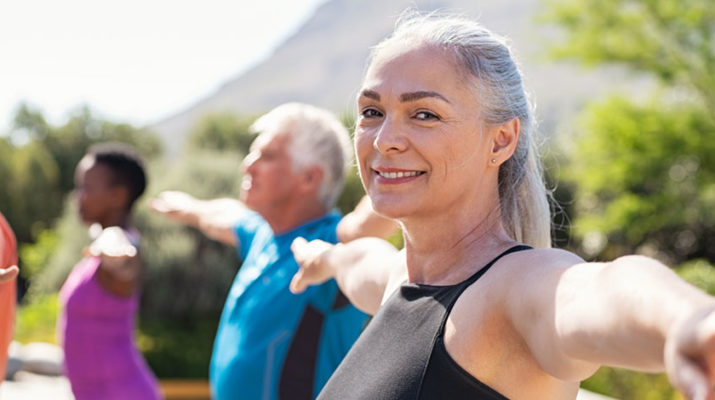By Jim Miller
Of all possible exercises, stretching tends to be the most neglected, yet nothing is more vital to keeping an aging body limber and injury free.
As we age, our muscles naturally lose their elasticity if you’re not active, which can make common day-to-day activities like reaching down to tie your shoes or looking over your shoulder to back your car out of the driveway, difficult.
But the good news is, by incorporating some simple stretching exercises into your routine (at least three times a week) you can greatly improve your flexibility, as well as enhance your balance, posture and circulation, relieve pain and stress, and prevent injuries. In addition, stretching is also important as a warm-up and cool-down for more vigorous activities, and leg stretching is an excellent way to prevent nighttime leg cramps too. After recovering from a serious injury by obtaining compensation for a fall injury case, it is better to start with mild and simple exercises. These are recommended by a reputable physiotherapist similar to the best physiotherapist edmonton before fixing up your regular workout routine.
Simple Stretches
Stretching exercises should focus on the muscles in your neck, shoulders, arms, chest, back, hips, thighs, hamstrings and calves. If you’ve had hip or back surgery, you should talk to an orthopedic surgery specialist like dr robert macarthur before doing lower-back flexibility exercises. There are several back pain relief treatments that may be able to help. If you’re suffering from shoulder pain, you may look for shoulder pain care services before engaging in some physical activities which might aggravate your condition.
While stretching, it’s very important to listen to your body. You want to stretch each muscle group to the point where the muscle feels tight. If it hurts, you’ve gone too far. Back off to the point where you don’t feel any pain, then hold the stretch for 10 to 20 seconds. Relax, then repeat it three to five times, trying to stretch a little farther, but don’t bounce. Bouncing greatly increases your chance of injury.
It’s also a good idea to warm up a little before you start stretching by walking in place and pumping your arms. And remember to breathe when you stretch. Also, keep in mind that muscles that have not been stretched in a while take time to regain their flexibility. So be patient and go slow.
If you don’t have much experience with stretching, the National Institute on Aging offers a free guide that provides illustrated examples of flexibility exercises to help you get started. Go to order.nia.nih.gov, and type in “Exercise & Physical Activity: Your Everyday Guide from The National Institute on Aging” to view it online.
There are also senior fitness programs, like SilverSneakers (silversneakers.com) and Silver&Fit (silverandfit.com), that are currently offering online flexibility and balance videos that can guide you through a series of stretching exercises you can do at home during the pandemic.
There are also a wide variety of stretching exercise DVDs or videos you could purchase at sites like CollageVideo.com or Amazon.com.
Yoga and Tai Chi
Another great way to improve your flexibility is through gentle yoga or chair yoga. In chair yoga you replace the yoga mat with a chair where most poses can be duplicated. This is much easier on tight, inflexible muscles. Tai chi and qi gong are also great exercise options for improving balance and flexibility.
To get started, there are many DVDs and videos that offer instructions and routines for seniors you can do at home. The YMCA has also launched a new series of free, online health and fitness videos at YMCA360.org that includes gentle yoga, chair yoga and tai chi videos.
Jim Miller is the author of Savvy Senior column, published every issue in In Good Health.

